Utilization Metrics For Your Agency

Utilization is the key metric for your agency.
Why? It’s an indicator of how much revenue you’re generating.
When you think about it, you’re actually selling your time to your clients. The more time you actually bill, the more revenue you’ll make.
So, how do you know if you’re generating enough revenue? You should start by analyzing where your time is going.
Note: we used Reports, Productive’s custom reports and custom fields to create examples for metrics you should track.
How To Track Utilization
Simply said, utilization is the number of billable hours your team is delivering. Those are the hours you will eventually charge to your clients.
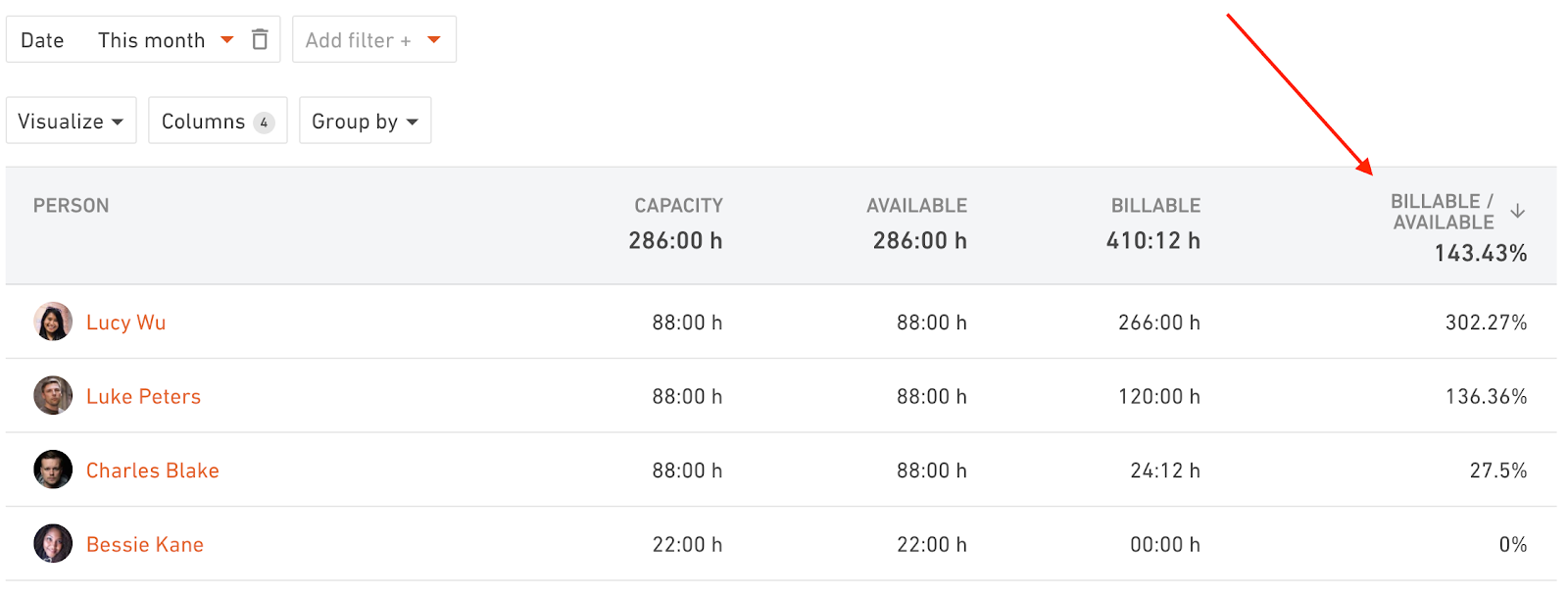
Take into account time off (vacation, sick leave) and holidays, too, because you need to know how much time your team has actually had at their disposal. That’s what we call available time in Productive.
You should aim for an average of 75% across your team, which should bring enough revenue to cover your costs and make a profit.
Optimize Your Agency’s Utilization Rate
Make sure you’re getting the most out of your resources by investing in an all-in-one agency management tool.
Utilization Per Seniority
You shouldn’t expect the same level of utilization from your team leads and juniors—that’s why you should compare them separately.
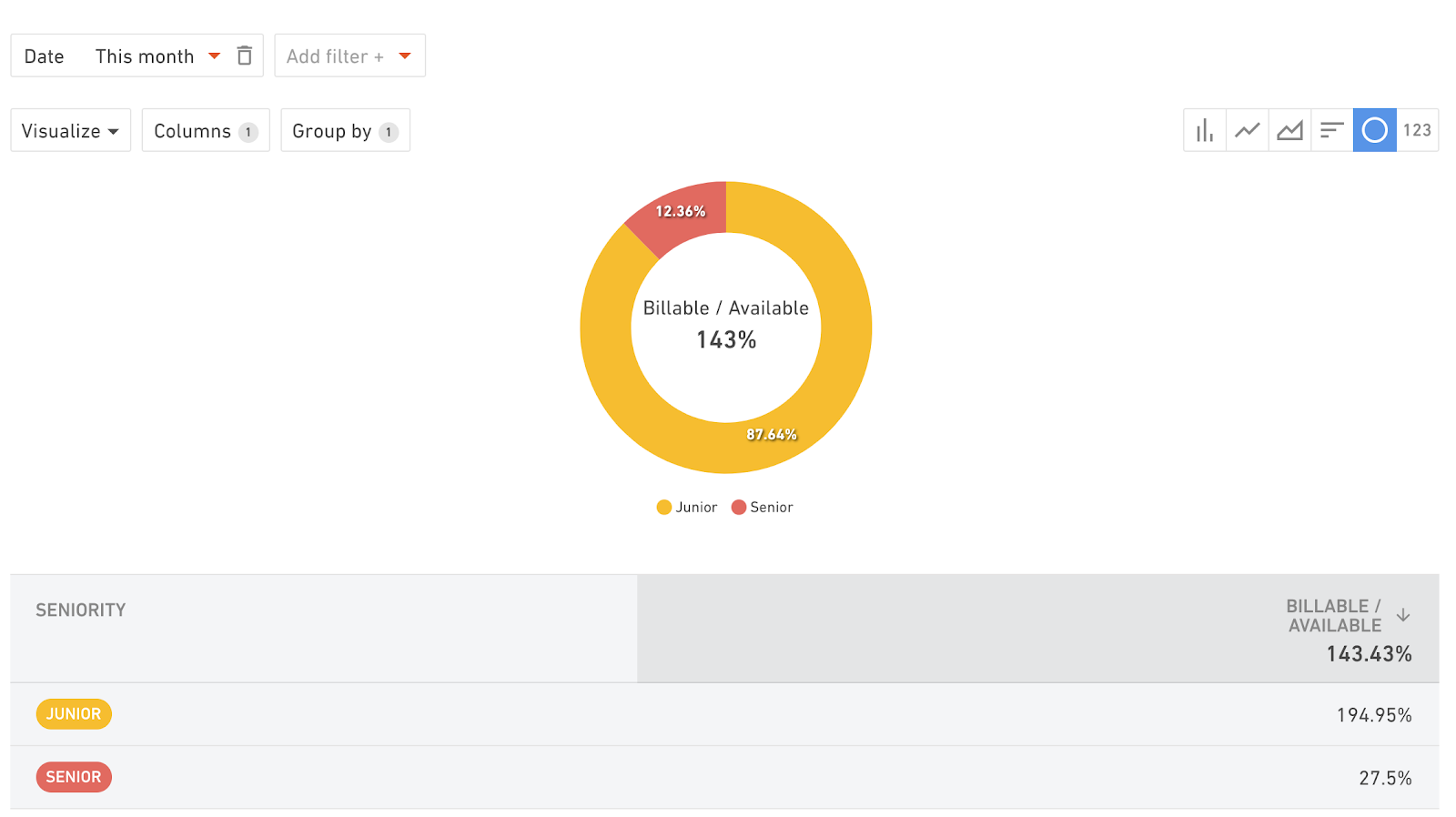
Seniors are involved in mentoring, training, onboarding new team members, helping with pitches, and writing content for your blog. Even though they’re more efficient than juniors, you should expect lower utilization rates from them, an average of 50-70%.
All of that time is an investment for your company, and that’s how you should treat it. Of course, since it is an investment, it’s important to track how much time you’re spending on internal activities because that time generates costs.
Internal time
In fact, internal (non-billable) time is generating costs. The more internal hours you put in, the more billable hours you need to make to cover those costs.
Comparing Utilization Per Teams
When looking at utilization, it’s important to look at different departments and skills.
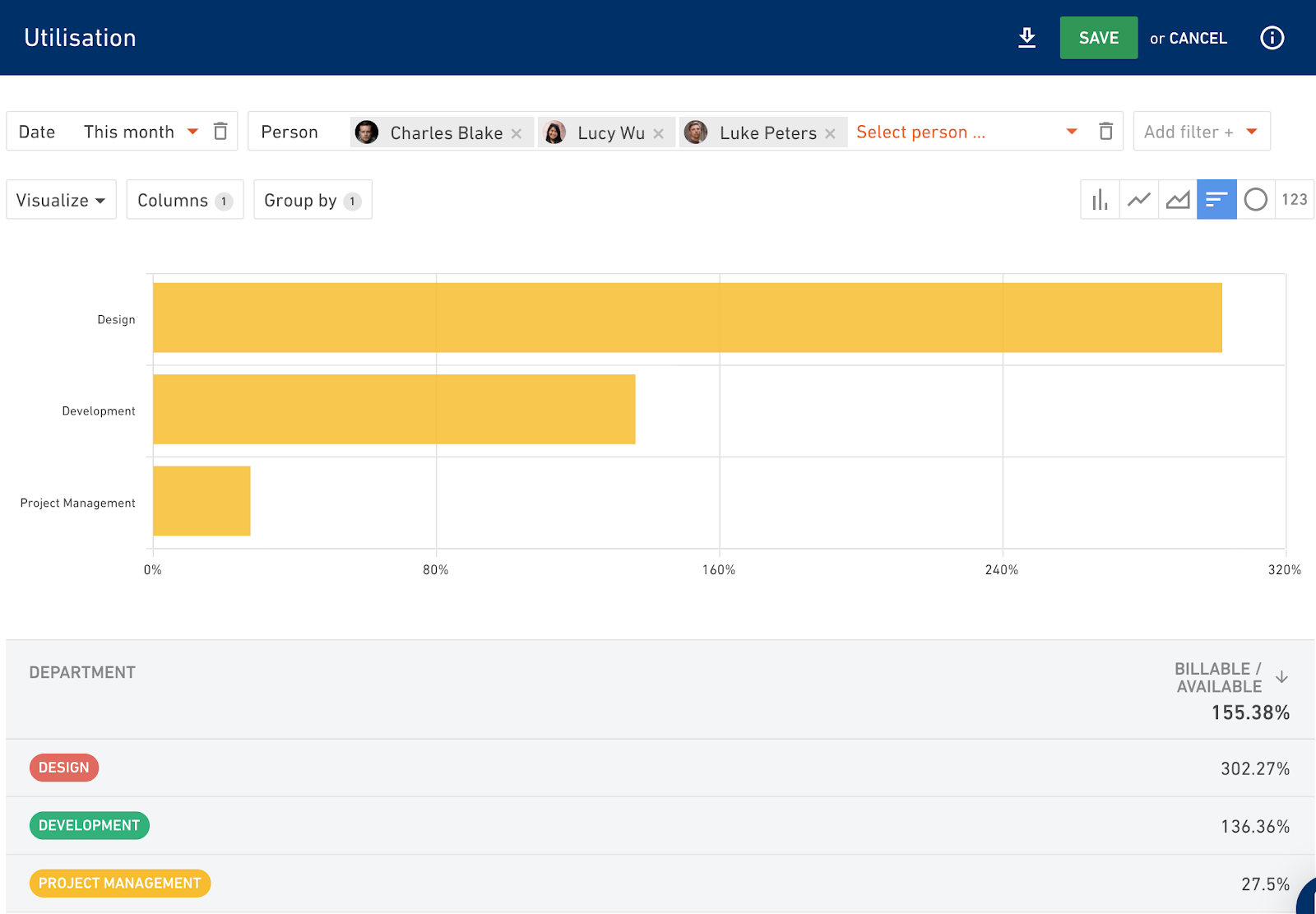
That will give you a good idea about which teams have too much on their plate, and which team members are sitting out on the bench—i.e. not generating enough billable hours.
Try rotating people from underutilized teams to other departments, or hire contractors to help out overutilized teams and prevent burnouts.
Utilization As Demand For Services
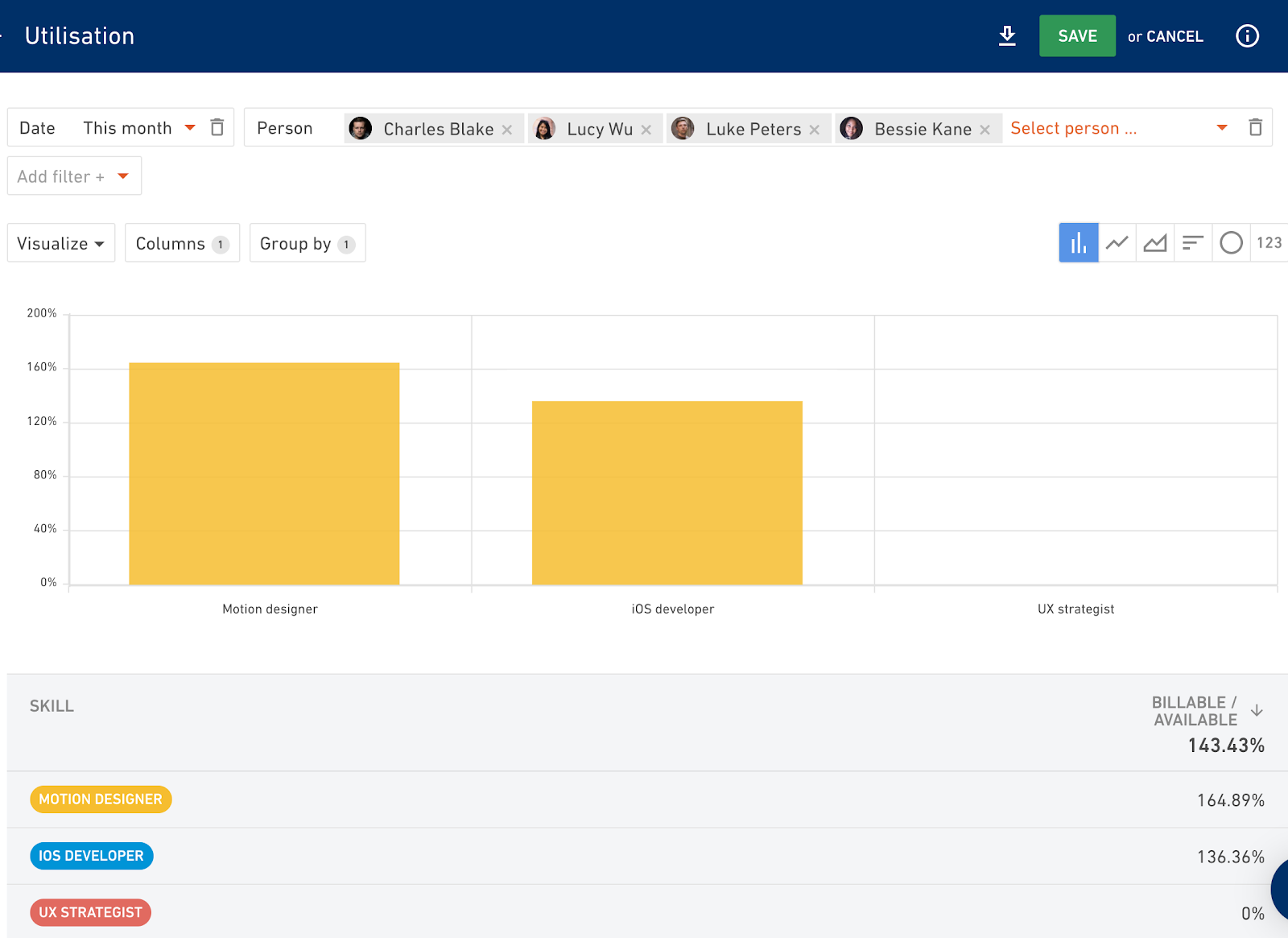
Skills with the highest utilization are obviously bringing in more billable hours, and you should look into expanding your team in that area by hiring more people or developing those skills among team members in underutilized areas.
The Seasonality Of Utilization
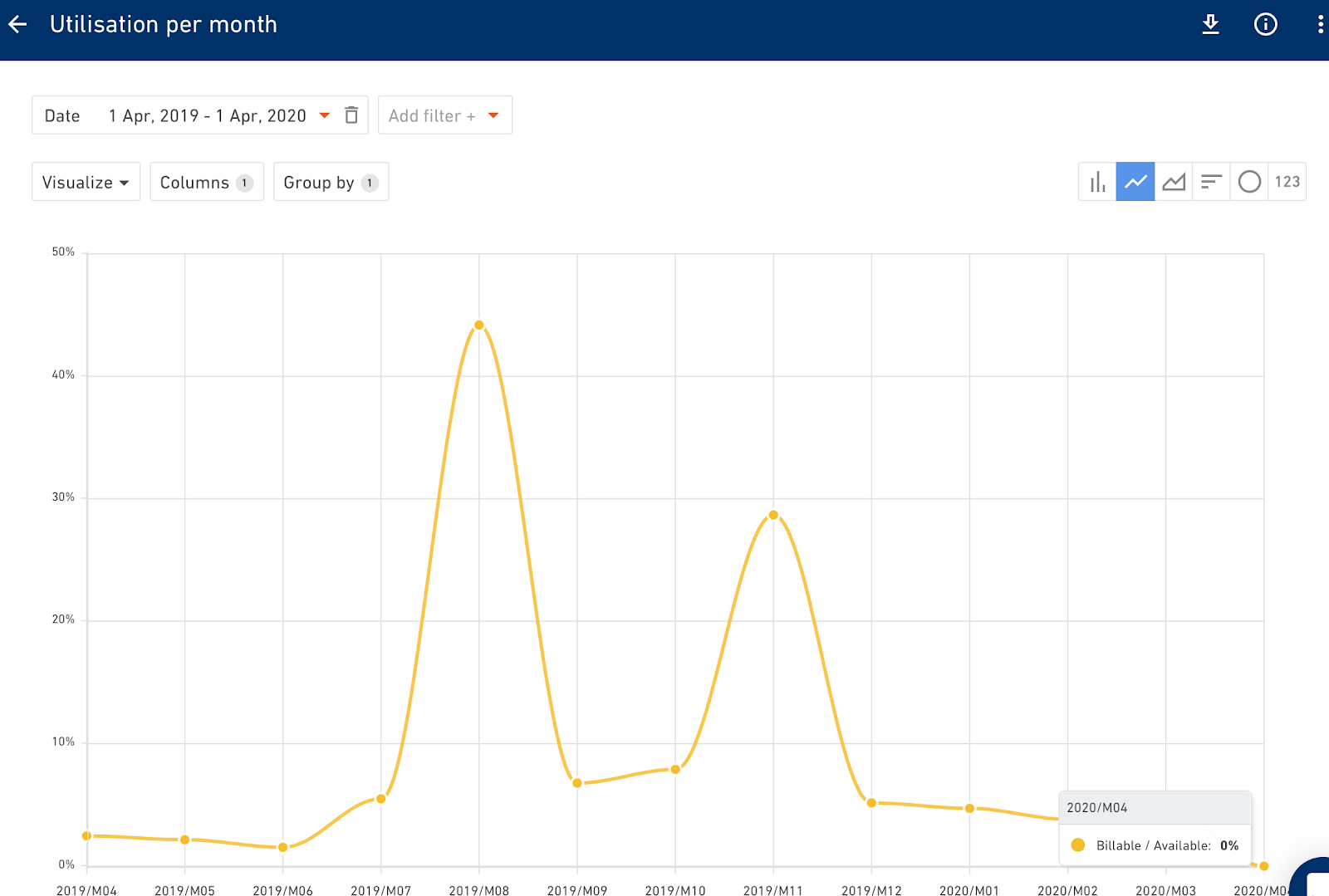
If, for example, in December you usually have a drop of 20% because of the holiday season, make sure you include it in targets for next year. Also, if you realize you usually peak in some months, try planning your project start dates and resources accordingly.
Chargeability vs. Client Hours
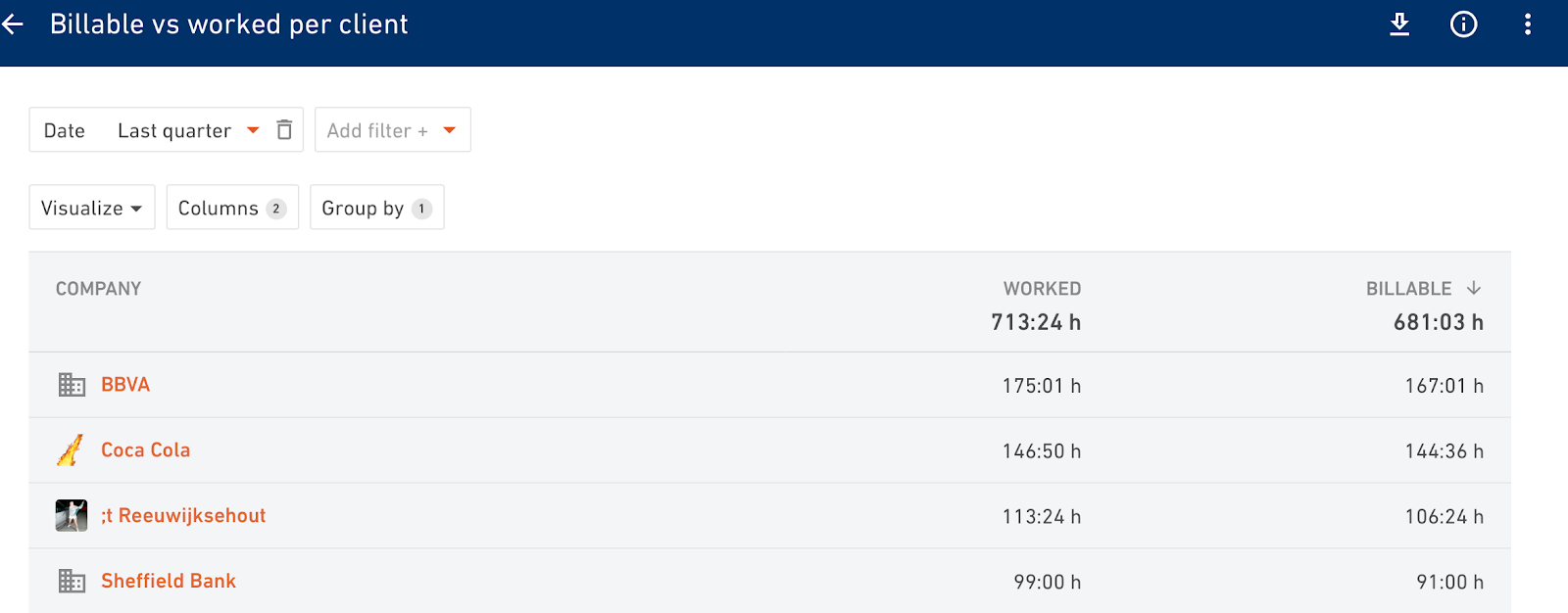
How you should think of it is “who’s eating my profit”, and not “who am I making happy”. Compare the hours you actually invest in your clients and those you end up billing. That’s an eye-opening comparison because it starts conversations with clients you should have probably already had.
Forecasting Utilization
Via Tenor: That moment when you go to forecast your utilization.
Based on the resources you’ve allocated to your project, you can already predict how busy you’ll be in the upcoming months and what kind of utilization rates you can expect.
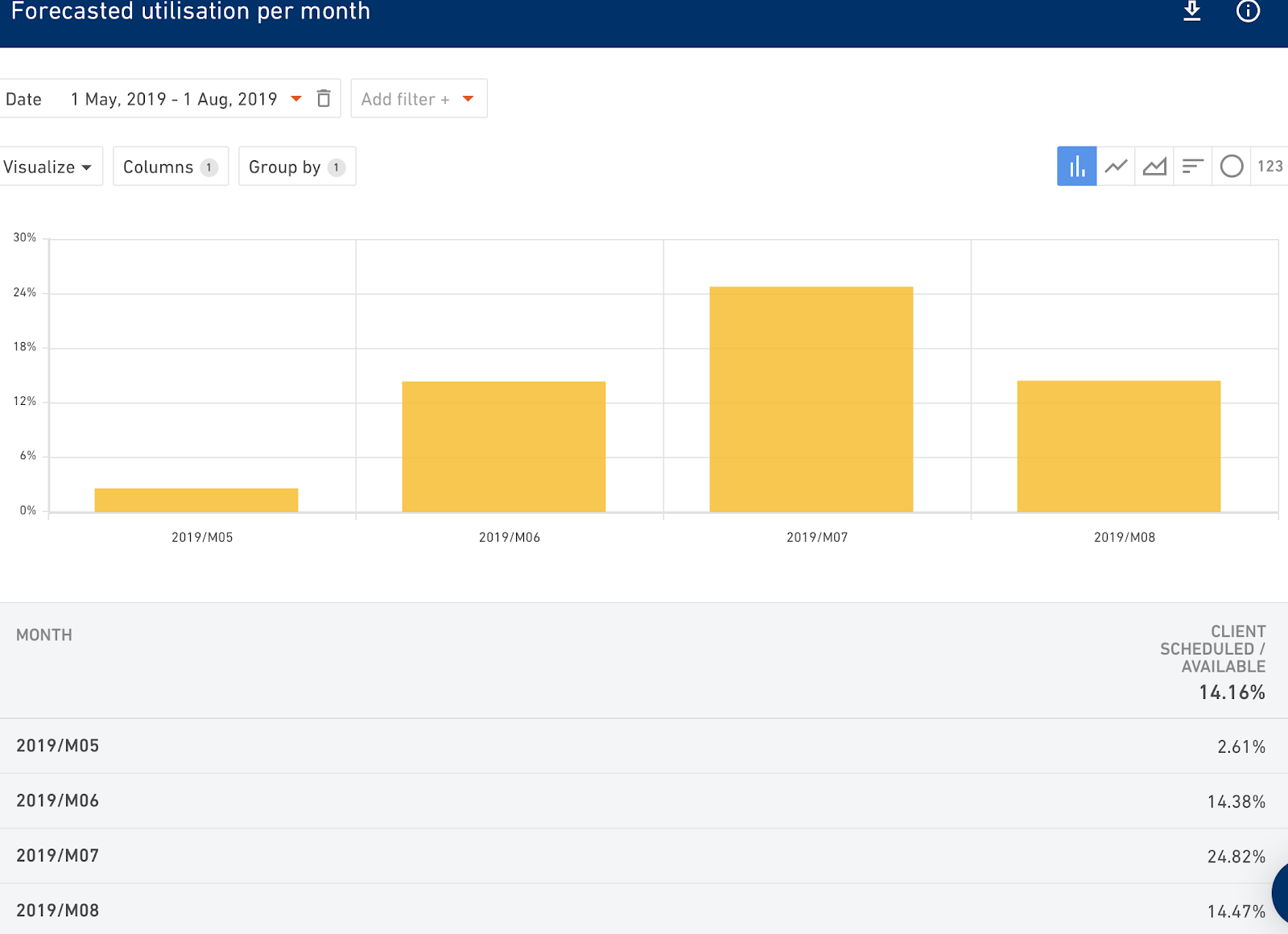
Go a step further and compare the future utilization of different teams or team members with specific skills. Once you know that, use it as a basis for your hiring plan and align it with your sales efforts. Once you’ve synced it all, there’s going to be perfect harmony in your agency—where everyone has just enough work on their plate.
See also: Top 8 Billable Hours Tracker Solutions for Professional Service Agencies
Need Help With Tracking Your Agency’s Utilization?
Optimize Your Agency’s Utilization Rate
Make sure you’re getting the most out of your resources by investing in an all-in-one agency management tool.

